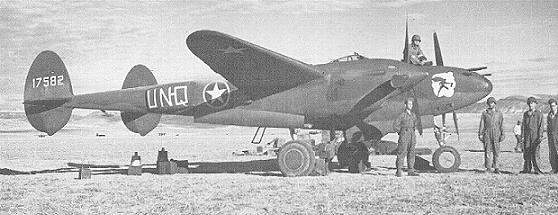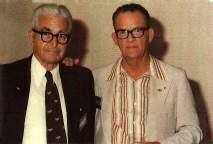-Assigned to the 8th., 12th. and 15th. Air Forces
- First Fighter Group to cross the Atlantic in their own aircraft (Operation Bolero.)
- First Fighter Group in 8th.AF to fly missions over enemy-held territory.
- Responsible for the first Axis aircraft downed in the ETO
- Campaigns: American Theater (anti-submarine,) Egypt-Libya, Europe (air offensive,) Algeria, French Morocco, Tunisia, Sicily, Naples, Foggia, Anzio, Rome, Arno, Normandy, Northern France, North Apennines, Rhineland, Central Europe, Po Valley, EAME (Europe, Africa, Mediterranean) Theaters (air combat)
- Three Distinguished Unit Citations
- Group Call Signs: "Petdog" (27th.FS), "Cragmore" (71st.FS), "Springcap" (94th.FS) (Effective 10 Sept.,1942)
- "1 to 30" (27th.FS), "31 to 59" (71st.FS), "60 to 90" (94th.FS) (Effective February, 1944)
- Additional Call Signs were used , these included: "Cockney", "Doorknob", "Warrior" and "Highlife".
-RECORD OF AERIAL VICTORIES-
|
DESTROYED |
PROBABLES |
DAMAGED |
| Group HQ |
1.33 |
1 |
9 |
| 27TH.FS |
187 |
45 |
97 |
| 71ST.FS |
115 |
25 |
58 |
| 94TH.FS |
136.66 |
32.5 |
81 |
- COMMANDING OFFICERS OF THE 1ST.FG-Lt. Col. Robert S. Isreal
July,1941 - 1 May, 1942 | Maj. John O. Zahn
1 May,1942 - 9 July,1942 |
Col. John N. Stone
9 July,1942 - 7 Dec.,1942 | Col. Ralph S. Garman
7 Dec.,1942 - 8 Sep.,1943 |
Maj. Joseph H. Preddie
8 Sep.,1943 - 19 Sep.,1943 | Col. Robert B. Richard
19 Sep.,1943 - 15 Nov.,1944 |
Col. Arthur C. Agan,Jr.
15. Nov.,1944 - 31 Mar.,1945 | Col. Milton H. Ashkins
31 March,1945 - 11 Apr.,1945 |
Lt. Col. Charles W. Thaxton
11 Apr.,1945 - 28 Apr.,1945 | Col. Milton H. Ashkins
28 Apr.,1945 - 3 July,1946 |
-ARTICLES ON THE 1ST. FG-

A 94th.FS P-38 Lightning in Africa.
- MARKINGS OF THE 1ST.FG -
In 1943 the different squadrons began to apply specific colors to their tailbooms, wingtips and prop tips. The 27th.FS Used red,(Squadron Codes beginning with HV), the 71st.FS used White (Squadron Codes beginning with LM,)and the 94th.FS used yellow, (Squadron Codes beginning with UN.) When the Group began receiving P-38s in their natural aluminium finish, the 71st.FS changed their color to black. Red spinners were also introduced sometime in 1944. The national insignia was surrounded by a yellow circle during the time of the North Africa invasion. These were then removed and the "star and bar" was added with a red outline for a time in 1943. Thereafter the normal national insignia was used.
- 1ST.FG HISTORY-
With the possibility of war looming on the horizon, 1st Pursuit Group was introduced to a new weapon in July 1941.At that time the 27th Pursuit Squadron received the first Lockheed P-38 Lightnings in the Army Air Force's inventory. The Group would have but six months to acquaint itself with their new mounts when on December 7, 1941, the Japanese attacked air and naval targets stationed in Pearl Harbor, Hawaii, finally drawing the United States into war.
Wanting to cover any possible vulnerabilities on the West coast of the country, the 1st and its assigned squadrons were moved from Selfridge to March Field, California for a short time before deploying for Europe on 25 April 1942. Before they left, however, an alumnus of theirs, Eddie Rickenbacker, made one of his two visits to the Group during World War II. The retired captain listened to the Group�s concerns and reported them to General Henry "Hap" Arnold. Rickenbacker also worked with Arnold to reinstate the hat-in-the ring emblem, absent since Rickenbacker had begun to use it for his automotive manufacturing business, back to the 94th. In May the Group was redesignated the 1st. Fighter Group.
Military strategists of the time deemed Hitler's Germany as a greater threat than Japan, and placed first priority with the war in Europe. As a result, the 1st Fighter Group deployed to England in what was called the "Bolero" mission. During the summer of 1942, the 1st flew training and occasional fighter sweeps over the skies of France until they received the call to move again, this time to North Africa. By 13 November 1942, the Group completed the move to Algeria, where they provided aerial support against German occupied territories.
On 29 November 1942, the 94th Fighter Squadron flew the Group's first combat sorties of World War II, strafing a German airfield and recording several aerial victories. For nearly a year, the Group moved throughout Algeria and Tunisia, flying bomber escort and providing air coverage for the ground campaign. Allied forces pushed the Germans back, and the North African campaign ended with the capture of Tunis on 7 May 1943.
Six months of continuous, heavy fighting in North Africa was followed by a short break during which the 1st. flew reconnaissance and escort missions around the Mediterranean. This respite ended on 15 August, as air attacks increased against southern Italy. On 25 August the 1st. launched 65 aircraft, and joined with 85 more, for a historic attack against the Italian Foggia airfield complex. In addition to strafing ground targets, the 1st damaged or destroyed 88 enemy aircraft, with a loss of only two P-38s. For this mission, the group received its first distinguished unit citation (DUC). Five days later, the group participated in a mission which earned them their second DUC. They launched a 44-aircraft formation, escorting B-26 bombers to the railroad marshalling yards at Aversa, Italy. Approximately 75-100 enemy aircraft suddenly attacked the formation. After a 40-minute air battle, outnumbered at least two-to-one, the bombing mission continued and was successful, in fact the bomb group returned to base without a single loss. The Group then moved to several different bases throughout Italy before finally settling down at Salsola Airfield, on 8 January 1944. Living and supply conditions improved for the airmen and new P-38Js arrived in the spring. On 16 April 1944, the group flew its 1,000th combat mission.
The 1st Fighter Group received its third DUC for action on 18 May 1944. That day's target was the oil fields at Ploesti, Romania. The fighters were scheduled to escort 700 bombers; however, bad weather caused many bombers to abort the mission. The fighters continued on through the heavy weather and upon reaching the target, found 140 American bombers were under attack by 80 enemy fighters. The 1st.'s 48 P-38s attacked the German fighters and drove them off, downing and damaged nearly 20 enemy aircraft, with a loss of one P-38, whose pilot parachuted to safety.

Douglas Campbell and Jack Ilfrey at the 1980 94th.PS Reunion.
Campbell was the first ace ofthe 94th.PS in WW1, Ilfrey of WW2. |
The remainder of the war proved less eventful for the Group, as the air war in Italy came to a close. The Group's last major operation of the war came in January 1945. Under Operation "Argonaut," the Group escorted British and American delegations to the Yalta Conference. A total of 61 aircraft deployed in missions escorting the ships and aircraft carrying President Franklin Roosevelt, Prime Minister Winston Churchill, and their aides to and from the Crimea. On 15 April 1945, the 27th Fighter Squadron, who had earlier scored the Group's first kill of the war, recorded the Group's last kill of the war.
During nearly three years of combat flying, the 1st Fighter Group flew over 21,000 sorties on over 1,400 combat missions.
Despite the demobilization of American forces after the war, the 1st Fighter Group remained fairly intact and returned to March Field, California. The group once again made history when it was assigned America's first operational jet fighter, the P-80 "Shooting Star".